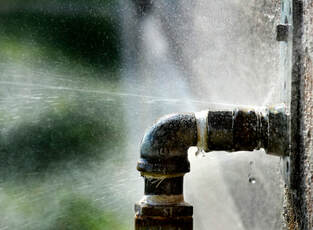Are you currently trying to locate know-how around Leaking water lines?

Early discovery of leaking water lines can alleviate a prospective catastrophe. Some tiny water leaks might not be noticeable.
1. Take A Look At the Water Meter
Every home has a water meter. Inspecting it is a proven manner in which aids you uncover leakages. For beginners, turn off all the water sources. Ensure no one will flush, use the tap, shower, run the cleaning equipment or dish washer. From there, most likely to the meter and also watch if it will certainly alter. Because no one is utilizing it, there need to be no motions. If it moves, that indicates a fast-moving leakage. Likewise, if you identify no changes, wait a hr or two and also inspect back again. This suggests you may have a slow-moving leak that might also be underground.
2. Check Water Usage
Analyze your water bills and track your water intake. As the one paying it, you need to see if there are any disparities. If you identify sudden changes, despite your usage coinciding, it means that you have leakages in your plumbing system. Bear in mind, your water expense need to drop under the same range every month. A sudden spike in your costs suggests a fast-moving leak.
At the same time, a consistent increase on a monthly basis, despite having the exact same behaviors, shows you have a sluggish leakage that's also gradually rising. Call a plumber to thoroughly inspect your property, especially if you feel a warm area on your floor with piping beneath.
3. Do a Food Coloring Test
When it comes to water consumption, 30% comes from commodes. If the color in some way infiltrates your bowl during that time without flushing, there's a leak between the container as well as dish.
4. Asses Exterior Lines
Do not forget to inspect your exterior water lines too. Examination faucets by attaching a garden pipe. Should water seep out of the connection, you have a loose rubber gasket. Change this and also ensure all connections are tight. It will help get it expertly analyzed and kept each year if you have actually got a lawn sprinkler system. One little leak can throw away tons of water and increase your water expense.
5. Assess the situation as well as evaluate
Property owners must make it a behavior to check under the sink counters and even inside cupboards for any type of bad odor or mold and mildew development. These 2 warnings show a leakage so punctual attention is required. Doing routine evaluations, even bi-annually, can save you from a major problem.
If you recognize your house is already old, maintain a watchful eye on your heating systems, pipes, pipes and so on. Look for discolorations and also deteriorating as many devices and pipelines have a life span. They will certainly likewise naturally wear away due to deterioration. Don't wait for it to escalate if you think leaking water lines in your plumbing system. Call a specialist plumber immediately so you do not wind up with a terrible mess in your house.
Early detection of dripping water lines can minimize a possible catastrophe. Some tiny water leakages might not be visible. Checking it is a guaranteed way that aids you find leaks. One little leak can waste bunches of water as well as spike your water expense.
If you think dripping water lines in your plumbing system, don't wait for it to rise.
WARNING SIGNS OF WATER LEAKAGE BEHIND THE WALL
PERSISTENT MUSTY ODORS
As water slowly drips from a leaky pipe inside the wall, flooring and sheetrock stay damp and develop an odor similar to wet cardboard. It generates a musty smell that can help you find hidden leaks.
MOLD IN UNUSUAL AREAS
Mold usually grows in wet areas like kitchens, baths and laundry rooms. If you spot the stuff on walls or baseboards in other rooms of the house, it’s a good indicator of undetected water leaks.
STAINS THAT GROW
When mold thrives around a leaky pipe, it sometimes takes hold on the inside surface of the affected wall. A growing stain on otherwise clean sheetrock is often your sign of a hidden plumbing problem.
PEELING OR BUBBLING WALLPAPER / PAINT
This clue is easy to miss in rooms that don’t get much use. When you see wallpaper separating along seams or paint bubbling or flaking off the wall, blame sheetrock that stays wet because of an undetected leak.
BUCKLED CEILINGS AND STAINED FLOORS
If ceilings or floors in bathrooms, kitchens or laundry areas develop structural problems, don’t rule out constant damp inside the walls. Wet sheetrock can affect adjacent framing, flooring and ceilings.
https://www.servicemasterbyzaba.com/blog/how-to-detect-water-leakage-in-walls/

Do you enjoy reading about Locating water leaks? Try leaving a short review directly below. We would be interested to see your ideas about this piece. We hope to see you back again in the near future. If you please set aside a second to promote this blog entry if you appreciated it. Thanks a lot for your time. Visit us again soon.